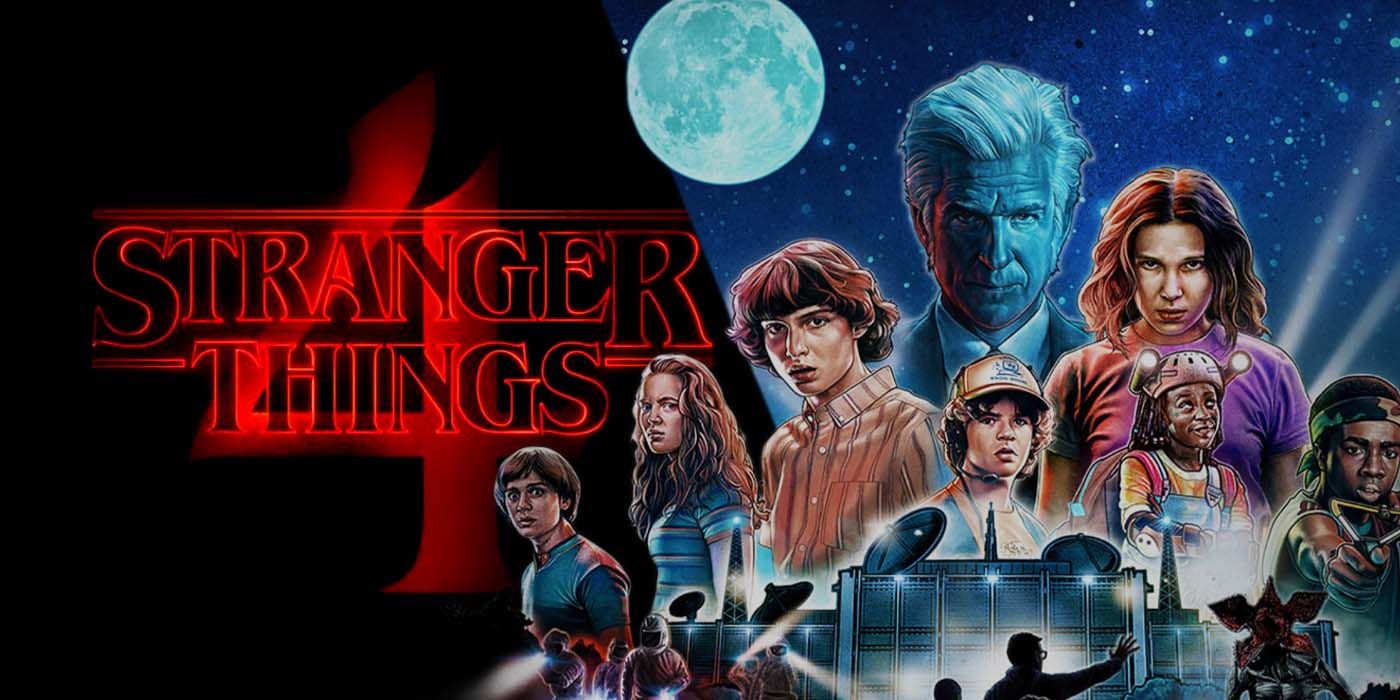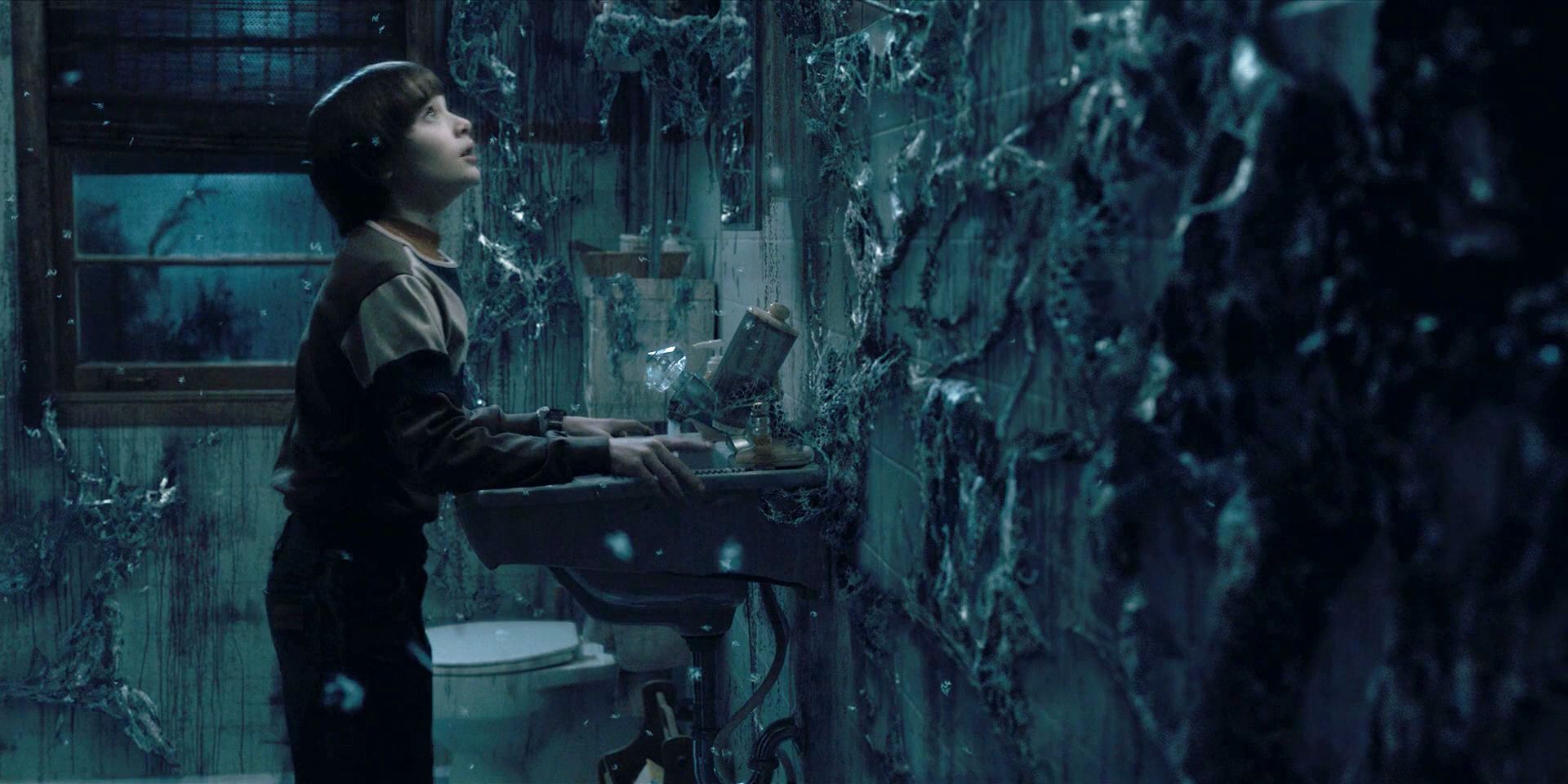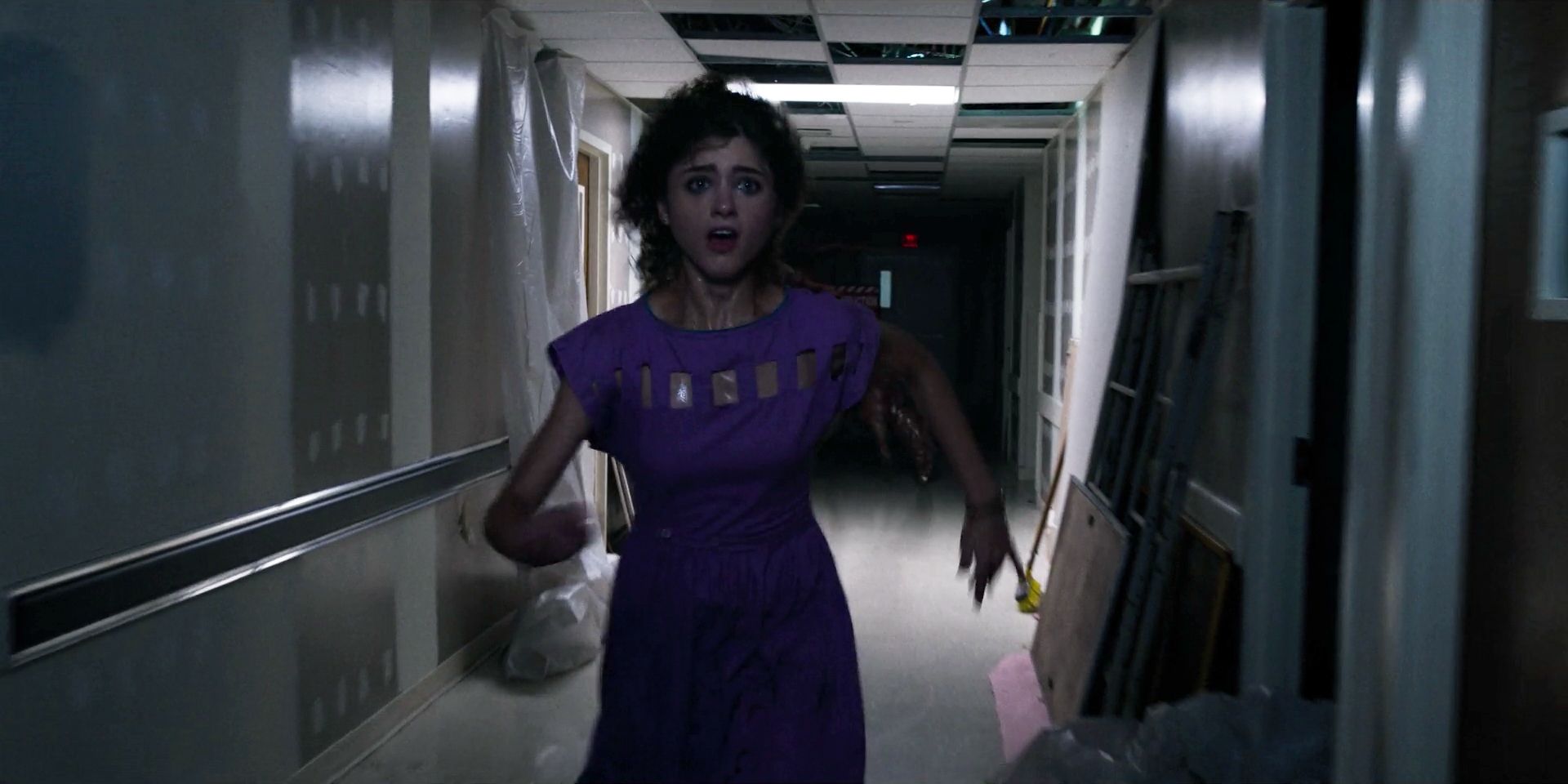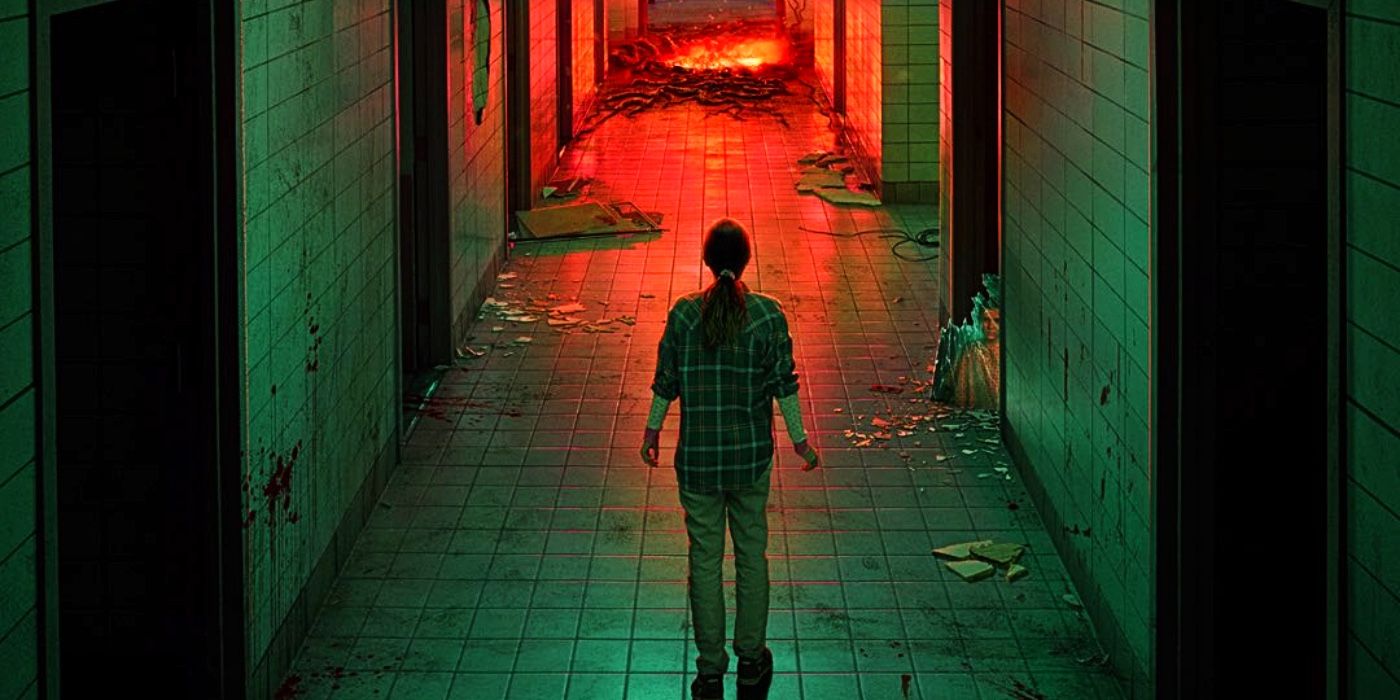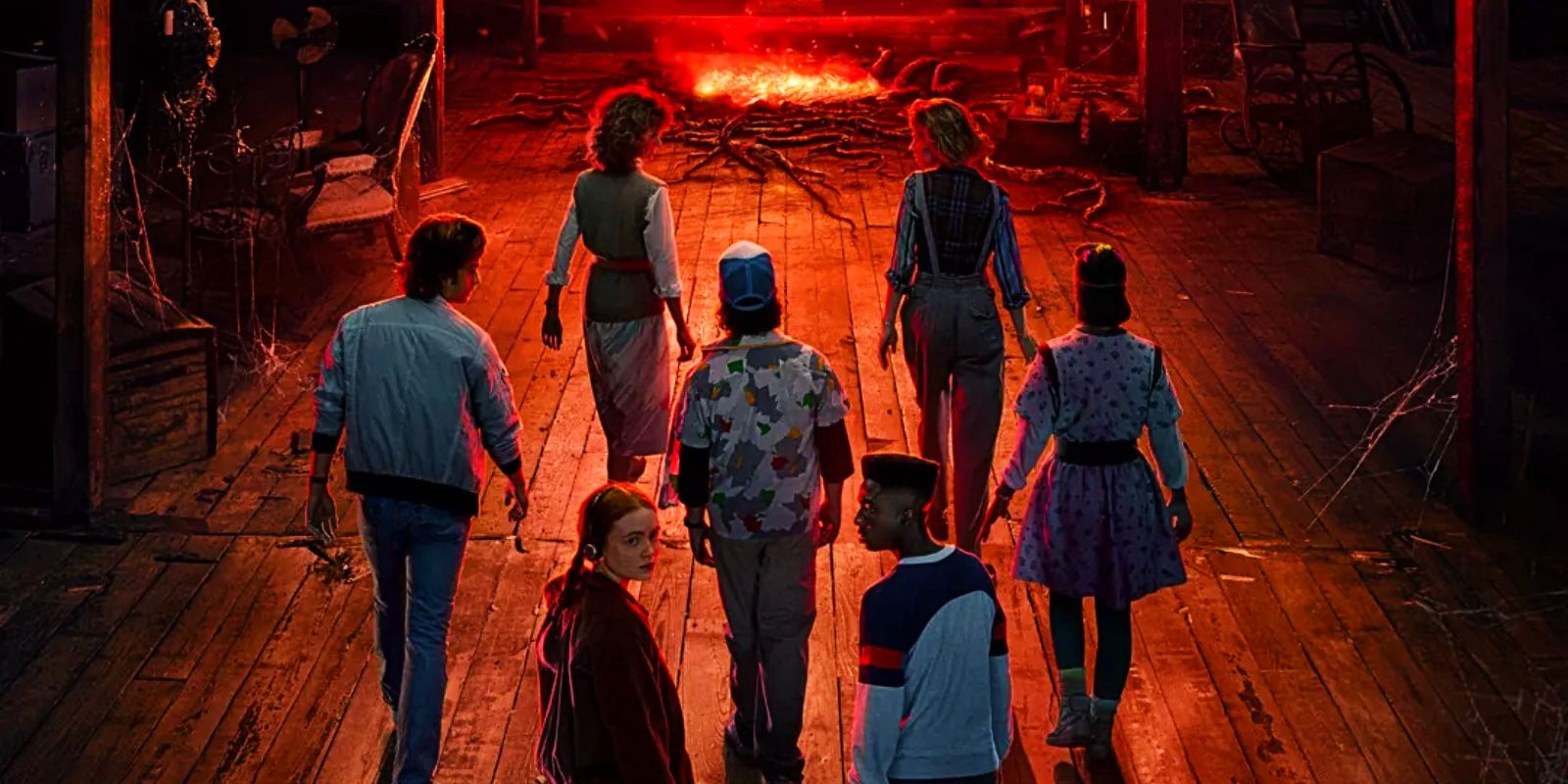It is a risky decision to split Stranger Things season 4 across two separate drops in late May and early July, but there is a reason why this strategy will work for Netflix. Viewers have been waiting years for a new season of Stranger Things and, in summer 2022, two of them will arrive at once. At least, that is how the streaming service has chosen to present its latest offering, with Stranger Things season 4 being released not as one nine-episode block, but as a five-episode half-season and another four-episode half-season a few months apart.
Episodes 1-5 of Stranger Things season 4 will arrive on Netflix on May 27 while episodes 6-9 will follow on July 1. This will mark the first time that the streaming service has split a season of Stranger Things, a show that until now has been one of Netflix’s most binge-watched projects. However, the decision is a canny one that will work for the series, since its basis can be found in the shifting tone of the show itself.
Stranger Things has changed a lot since season 1. Where the show was once a dark drama with some supernatural elements, by Stranger Things season 3, the series had incorporated broad character comedy and a far faster pace into proceedings. The scope of Stranger Things has changed with each passing season and Netflix’s release strategy is a clever way of acknowledging this. While Stranger Things season 3 frustrated some viewers who opted to binge-watch the overstuffed outing, season 4 will force viewers to take their time with the show and discourage them from being frustrated by subplots in the process. Season 3 set up too many story strands and inevitably left them hanging for episodes at a time, where Stranger Things season 4’s release strategy will allow the show to be more measured and precise in its storytelling.
Stranger Things Used To Be Perfect For Binge-Watching
Back in seasons 1 and 2, Stranger Things was a surprisingly slow-paced show (particularly season 1, which was outright somber at times as proven by the devastating discovery of Will’s dead body). Stranger Things season 1 needed the viewer to binge-watch the show because of how slowly the series drip-fed its story, as viewers might have become tired with the slow pace and dark tone if it weren’t for the fact that the whole project could be viewed in one sitting. However, as Stranger Things continued, the show expanded its scale and began to introduce more and more supporting characters to its ever-growing cast. The tone also became notably lighter with each passing season, never returning to the grim and slow storytelling of season 1 in favor of faster-paced plots.
Stranger Things Season 3 Changed The Show’s Tone
While season 2 held on to some of the darkness found in its predecessor and told its story relatively slowly, Stranger Things season 3 felt more like a traditional serialized TV show with plenty of subplots on the go and many plates spinning at any given time. While this resulted in a faster-paced outing and much more action and comedy, the approach also meant that viewers who opted to binge-watch season 3 were likely to get a headache from all of the subplots and stories they needed to keep track of. In quick succession, Stranger Things season 3 moved from Billy becoming a body-snatching Mind Flayer conduit to Mike and El breaking up, to Dustin and Steve (and later Robin and Erica) discovering a secret Soviet base under the Starcourt Mall, to Hopper evading an assassin, to Joyce and Hopper uncovering the corrupt Mayor Kline’s shady land dealings, to Jonathan and Nancy’s work at the Hawkins Post, among other stories. While modern TV viewers are incredibly savvy and able to handle complex plots, that's still a lot of story for one eight-episode season.
Stranger Things Season 4's Release Dates Force Viewers To Slow Down
While season 3 was not a complete mess, it did prove that Stranger Things could do too much too fast and end up leaving audiences frustrated. However, a lot of what made the story seem interminably overcrowded was the delivery method. Viewers could, if they chose, binge-watch all of season 3, meeting new characters ranging from Alexei to Mayor Kline, to Robin, to Girgori, to Bruce Lowe, all in the space of a few hours. However, this will not be an issue for the next outing of the hit show. By splitting the Stranger Things season 4 drop in two, Netflix is ensuring that viewers can’t binge-watch the whole thing and end up feeling like the outing is as overstuffed and calamitous as season 3. This is doubly important because season 4 will introduce a slew of new characters and keep the primary cast separated for much of its runtime, according to promotional materials, meaning it is more important than ever that its subplots can function as standalone stories.
Stranger Things Season 4's Story Can Afford To Speed Up
Packing the stories of the still-alive Hopper being exiled in Siberia, Will and El living in California, the gang in Hawkins, Jonathan and Nancy’s relationship, the return of Dr. Brenner, and Mike and El’s relationship into one short season was always bound to be tricky. In contrast, splitting Stranger Things season 4 into two distinct entries allows the show more time to approach each of these plots standalone stories, meaning there should be less of season 3’s long gaps where one cliffhanger was left unresolved as the story moved on to a new subplot. For long stretches at a time, Stranger Things season 3 viewers were encouraged to forget that dozens of Hawkins residents were being consumed by the monstrous Mind Flayer to focus on Joyce and Hopper’s ill-fated date or an argument between Robin and Steve.
In contrast, season 4 can take Stranger Things' established formula of pairing off unexpected characters and forcing them to work together a step further. The show’s first five-episode drop can keep its primary cast apart and take time to update viewers on where they have been since season 3, giving audiences a reason to get re-invested. Then, once their standalone subplots reach a satisfying conclusion, the second half of season 4 can reunite the heroes for a bigger adventure. By eliminating the option of binge-watching, Netflix has ensured Stranger Things season 4 has room to tell a bigger, more ambitious story with more moving parts—provided the cast and writers of the show are up to the challenge.

